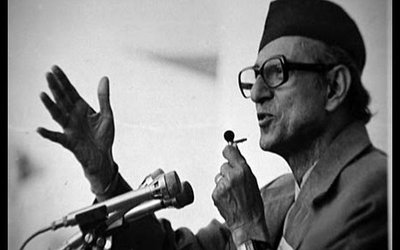
Newly elected mayor of Kathmandu Metropolitan City Balen Shah has promised that he can turn Kathmandu into a beautiful city in the world. Harka Sampang Rai declared that he will end the prolonged water crisis of Dharan. Hamal declared that better governance will be his priority.
Although he lost the elections with a thin margin of votes, Deepak Raj Joshi, an independent mayoral candidate of Vyas Municipality of Tanahu, has announced that he will continue to work for the betterment of people. Hospitalized after physical assaults by the goons of his rival Nepali Congress candidate, Joshi said that his life is dedicated to the people of Tanahu and he will continue to work whatever fate he has to face.

Along with them, there are many young candidates contesting the local elections who hold similar views. Entering the fray after a long gap in politics, Nepali Congress candidate Sirjana Singh, who emerged second in the elections of Kathmandu Metropolitan City, conceded the defeat accepting the verdict of people. Congratulating her political rival Balen Shah, Sirjana Singh has also noted that she will be watchful.
In a political atmosphere where political morality is virtually non-existent, Bibekshil Sajha Party president Rabindra Mishra has immediately tendered his resignation taking the responsibility for the debacle as chairperson of the party.
In contradiction to Mishra, Kamal Thapa, president of the newly formed RPP-Nepal, blamed CPN-UML for the bad performance of his party’s debacle in the local elections.
All these trends indicated that something new in the political setup is knocking the door of Nepali politics. At the age of social media as a major influencer and declining traditional media, the recently concluded elections have generated interesting hints.
Local Polls
After a long uncertainty and dispute, Nepal has finally completed the local elections, second under the present Constitution. Despite losing some important local levels, the five-party alliance led by Nepali Congress made a sweeping victory. The elections also cut the size of the main opposition CPN-UML compared to the last elections.
Although the voice of independent candidates is small compared to the big parties, they symbolize the growing disenchantment against political parties and their failure to deliver goods and services to the people.
“I will promise you our all-out efforts to make Kathmandu clean by clearing all the garbage of the city,” announced Shah, after visiting the land-fill sites in Banchare Danda. Although she is elected from CPN-UML ticket, deputy mayor Sunita Dangol has also made it clear that she will work for the people of Kathmandu.
Whatever Balen Shah, Rai and Hamal promise to make a change, they need complete support from Ward Chairs and ward members, who have been elected as candidates of political parties.
Given the first-day scenario of oath-taking when representatives of political parties virtually did not back the first decision of the mayor to make the city council live, there will be more clashes in the coming days.
Elected on the basis of popular votes by symbolizing the disenchantment of people, Nanai Maiya Dahal, Puhatu Chaudhari, Govinda Nath Uprety, Rup Chandra Bishta and Umesh Jung Thapa had rebelled in the Panchayat. As they were unable to work with the aspiration of the people, growing frustration and disenchantment gave fall of the Panchayat regime.

This time to failure of Balen Shah, Rai, Hamal and other popular independent elected representatives will be regarded as a failure of political parties and the system will generate more confusion. If political parties consider the failure of these independent representatives as their success, this will have reverse results.
“I am here to work and address the problems of people,” said Mayor of KMC Balen Shah. “I need support from all the representatives to bring the desired change.”
Having completed his first tenure successfully and was reelected with a thumping majority, Chiribabu Maharjan, Mayor of Lalitpur Metropolitan City, can play a balancing role. With an experience of running the Metropolitan City, Maharjan can help bury the likely division in the Kathmandu Metropolitan City.
NC In lead
After the publication of the final elections results by the Election Commission, Nepal’s 10th local polls have been concluded. The five-party ruling alliance led by Nepali Congress swept the elections, pushing main opposition CPN-UML at the brink. Out of 753 municipalities, which include 293 Metropolitans and 460 Rural Municipalities, Nepali Congress won 328 heads, including140 Mayors and 188 Chairpersons.
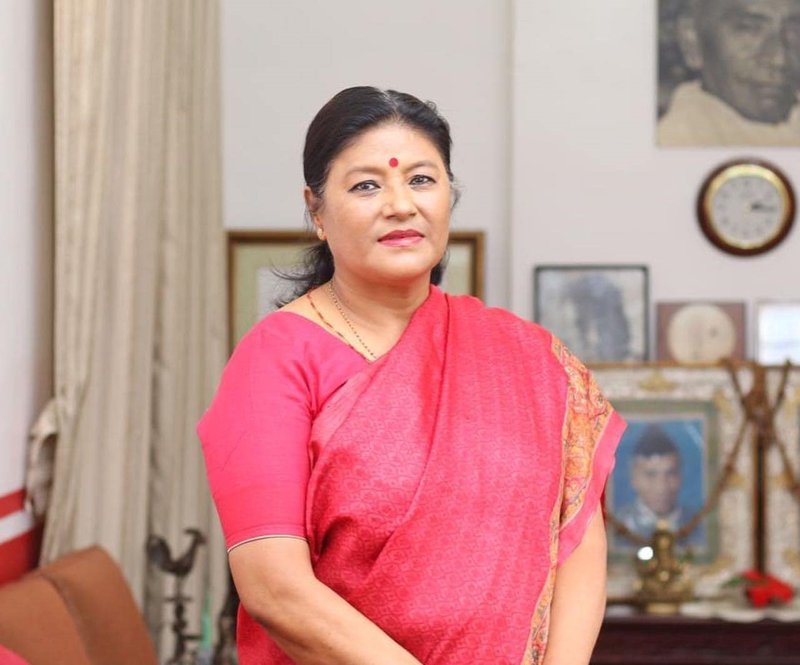
Elections Results
Out of 293, NC won 140 Mayor and 110 deputy mayors followed by 188 chairs of rural municipalities and 190 deputies. Similarly, NC wons 2663 ward members out of 6730 and 2604 out of 6728. UML won 2129 ward chairs and 2343 women members followed by Maoist 1053 and 963. Similarly, CPN-Unified Socialist won 12 mayors and Janta Samajbadi Party won 21 chairpersons. Others won 32 mayors and 31 chairpersons.
Janata Samjbadi party won 12 deputy mayors and 19 vice chairpersons. Others won 23 deputy and 30 vice-chairpersons. Janata Samajbadi party won 295 ward chairs and 299 women members followed by others with 590 and 519.
The tallies are for 744 out of 753 local units that had already been announced. Vote counting was going on for the remaining few units, Election Commission stated.
Boon For RPP
Under the new leader Rajendra Linden, the recently concluded local elections turned into a boon for RPP. Under new leadership, RPP elected over 300 representatives including two mayors of major municipalities including Shankharapur of Sankhu and Damak of Jhapa.
RPP elected over 30 representatives in the local elections held in 2017. In terms of ballots, the party reportedly secured over 400,000 votes. For the newly emerging party, Bibekshil Sajha, the local election was a major debacle.
In the first elections, its candidates secured big votes in the big municipalities including Kathmandu and other major cities. This time they were nowhere. However, RPP came back securing the third position in many municipalities and rural municipalities.
Although it contested the elections under the symbol of CPN-UML, RPP-Nepal led by Kamal Thapa was virtually wiped out in the local elections.
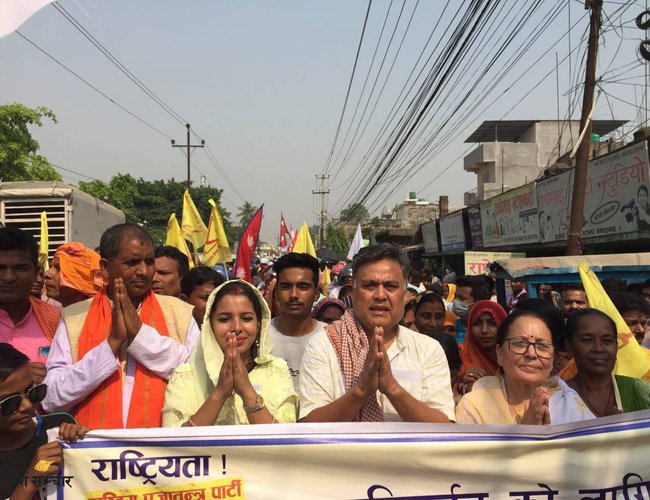
385 independent candidates elected
Altogether 385 independent candidates sealed victory in the May 13 local election so far, according to the Election Commission of Nepal. A total of 24 political parties had participated in the poll and of the 385 elected independent candidates, 266 were male and 119 female. Also, seven of them were elected mayors and six chairpersons of rural municipalities.
Independent candidates won mayor in Kathmandu Metropolitan City, Dharan Sub-Metropolitan City, Dhangadi Sub-Metropolitan City and Janakpur Sub-Metropolitan City.
Similarly, two were elected deputy mayors and two vice-chairpersons. Also, 136 emerged victorious as ward chairpersons.
14,402 women elected at local levels
As many as 14,402 women have been elected to different positions at the local level across the country, according to the Election Commission.
Women candidates have been elected both the mayor and deputy mayor in three municipalities across the country. In provinces 1 and 2, 455 women candidates have been elected out of 8,196 women candidates in total.
In Madhesh province, 2,770 women candidates have been elected out of 15,780 women candidates in total. Similarly, in Bagmati, 2,347 women candidates got elected out of 4,649 while in Lumbini 2,124 got elected out of 8,767 women candidates.
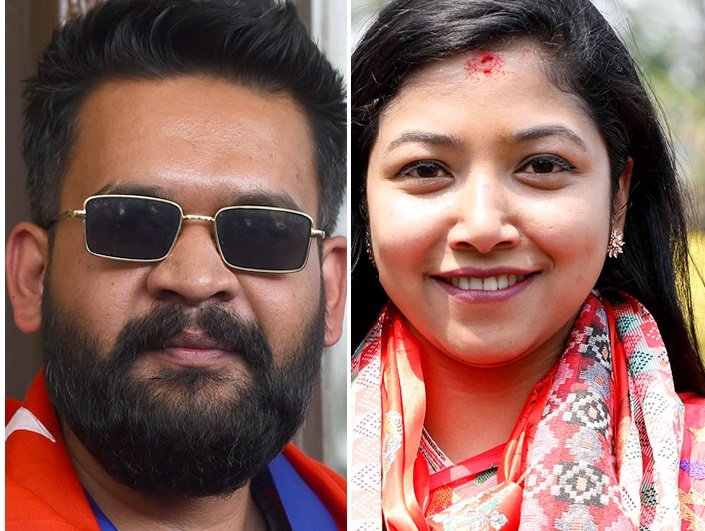
According to the EC data, 1,524 women candidates got elected out of 4,878 women candidates in Karnali province while in Sudurpaschim 1560 women candidates were elected out of 5,085 women candidates.
Women have been elected Chiefs at 25 local levels across the country. However, 123 member seats of Dalit women have remained vacant out of the total reserved for them while a seat out of total seats reserved for women has also remained vacant.
History of Local Elections
Sixth elections since 1990 including a short-lived municipal poll of 2005 and the 10th since the first elections of 1948, the recently concluded local polls gave birth to new trends.
In 1949, the first elections of Kathmandu city were held and the second was held on September 9, 1953. Candidates nominated by then illegal Communist Party of Nepal got 50% of the total votes cast. Out of a total of 19 seats, six were won by communists, four by Nepali Congress, four by Praja Parishad, one by Gorkha Parishad and four by independents.
For the first time, in February 1947, Padma Sumsher Rana declared the establishment of a municipality in Kathmandu. Marketed as a democratic institution, Padma Shumsher even conducted elections for chairman of the 18 wards and then for vice chairman of the municipality. However, the chairman of the entire municipality was nominated by the State, which led other elected representatives to resign in protest.
After the establishment of democracy in 1951, a Municipality Act was drafted, according to which the first election for Kathmandu municipality was held on August 25, 1952.
Since the first elections of 1949, local elections remain popular among the people. Overwhelming numbers of people take part in the local elections. This time was no exception.

Due to the complications in the voting, voter turnout and cancellation were much higher this time than any local elections in the history of Nepal. In Kathmandu over 40000 votes were invalid. Pokhara Metropolitan City too had a similar story. The newly elected mayor of Pokhara Metropolitan City even demanded the resignation of chief elections commissioner for printing the complicated ballot paper resulting in widespread invalid votes.
This year’s local elections have shown that the advent of social media has started to weaken the political bases of political parties among the younger voters. Easy to communicate and widely circulated, social media is playing a major part in the elections results.
Unlike in the past, voters have shown that they can defy the political parties in selecting the candidates. The election of Sunita Dangol, an independent minded candidate, as a deputy major of Kathmandu Municipality from CPN-UML has shown that voters want the candidate of their choices not the choices of political parties.
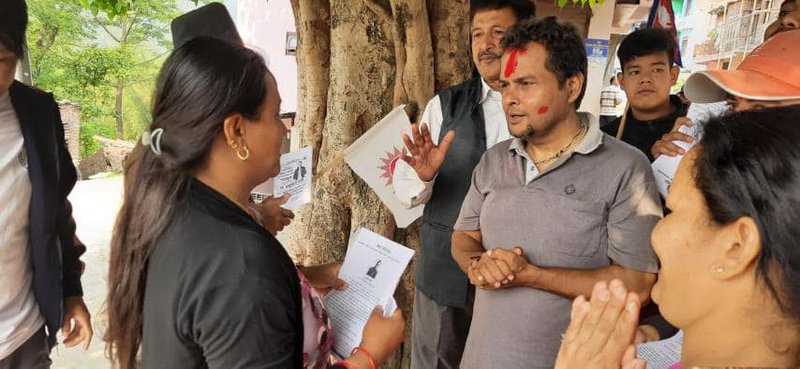
- FOREIGN EXCHANGE: Largest Deposit
- Jul 22, 2024
- IMF: Approval Of SDR
- Jul 22, 2024
- NEPAL-KOREA RELATIONS: Fifty-Years Of Warm Relations
- May 31, 2024
- NEPAL-BRITAIN: Centenary Celebration
- May 31, 2024
- POLITCS: Forming New Alliances
- May 27, 2024


